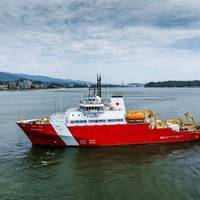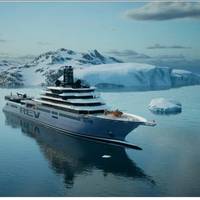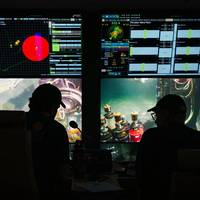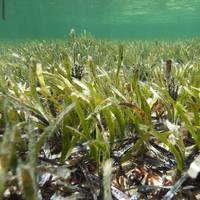Ocean Science News
Oil Leaking from USS Arizona Could Provide Guidance for Thousands of WWII Shipwrecks

A new study published in Marine Pollution Bulletin shows that oil is still seeping from the wreck of the USS Arizona, more than 80 years after its sinking at Pearl Harbor. The study focuses on samples collected by the National Park Service in 2016 and 2018.Researchers, led by the University of Houston and Woods Hole Oceanographic Institution (WHOI), analyzed oil samples collected from multiple leak points on the sunken battleship, using advanced molecular fingerprinting techniques. The results confirm the oil is a heavy fuel oil refined from California crude, consistent with U.S.
CCG's New Offshore Oceanographic Science Vessel Begins Sea Trials

CCGS Naalak Nappaaluk, the Canadian Coast Guard’s (CCG) new Offshore Oceanographic Science Vessel (OOSV), began sea trials this week in North Vancouver, sailing from Seaspan Vancouver Shipyards where final outfitting, installation, and commissioning work has been taking place since the vessel’s launch in August 2024.CCGS Naalak Nappaaluk is a Polar Class 6 vessel, with a displacement of 5,058t, and is 88 meters long, 17.6 meters wide, and will accommodate up to 60 personnel.Sea trials mark the final major phase of a shipbuilding project before delivery.
REV Ocean Finds Ship Management Partner for New Expedition Vessel

V.Ships, part of V.Group, will partner up with REV Ocean to provide a suite of ship management services for the REV Ocean vessel, deemed the world’s largest and most advanced research and expedition ship.Currently at Vard Søviknes in Norway, the vessel will be equipped to conduct research across the entire marine ecosystem, using advanced technology systems.Scientists and other experts will use it for research expeditions, seeking to solve issues related to the impact of CO2 emissions…
Scientists Reconstruct Impact of Seafloor Volcanic Eruption

An international team of scientists is reconstructing the impact of the 2008 Chaitén volcanic eruption on the marine environment following an expedition onboard Schmidt Ocean Institute’s R/V Falkor (too).After 9,000 years of dormancy, the Chaitén Volcano erupted without warning on May 2, 2008. Ash spewed 30 kilometers (18 miles) into the air and blanketed the landscape. Heavy rain in the following days triggered devastating volcanic mudflows known as lahars that cascaded down mountainsides and into the Northern Patagonian Sea.
4500 Years Old & 180km: World's Largest Known Plant Discovered in Shark Bay

Largest known plant on earth discovered at Shark Bay, and it's 4,500 years old.Researchers from The University of Western Australia and Flinders University have located what is believed to be the largest plant in the world – an ancient and incredibly resilient seagrass stretching across 180km that is estimated to be at least 4,500 years old.The discovery of the single plant or ‘clone’ of the seagrass Posidonia australis in the shallow, sun-drenched waters of the World Heritage Area of Shark Bay in WA…
